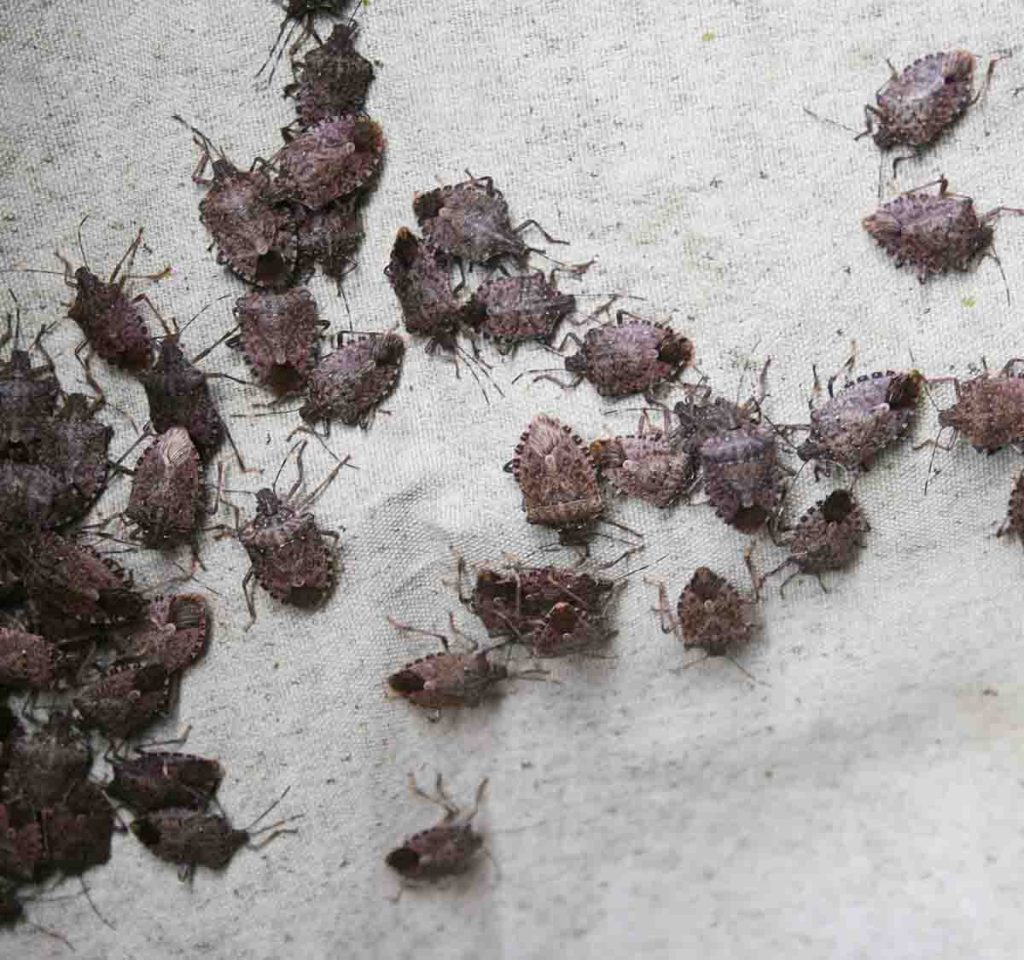At Titan Pest & Wildlife, we can protect your home all year long from stink bugs and other invading insects and rodents.
Stink bugs are known for two things: their pungent smell and their uninvited entry into homes. But what exactly attracts stink bugs into residential areas? This is a question that homeowners, particularly those who’ve been victims of stink bug invasions, often ponder. Understanding the factors that attract these critters can help in effective prevention and management.

The Biology of Stink Bugs
Before diving into what lures stink bugs into your house, it’s crucial to understand their basic biology. Stink bugs are shield-shaped insects that belong to the family Pentatomidae. They are mainly herbivores that feed on fruits, vegetables, and other plants, but they can also feed on insects. The smell they emit often likened to coriander, is a defense mechanism to ward off predators.
Factors that attract stink bugs to your home include:
- Food Sources: Stink bugs are primarily attracted to gardens and farms where they can easily access their favorite foods like fruits, leaves, and other plant parts. If you have a garden filled with vegetables, fruits, or ornamental plants, it’s like opening a buffet for them.
- Warmth and Shelter: Like many other insects, stink bugs seek shelter from adverse weather conditions. They look for warm places to hibernate in colder months, and your cozy home becomes an inviting refuge. Cracks and crevices in walls, windows, and doors serve as entry points.
- Lights: These bugs are attracted to light sources, including those that emanate from windows and doors. This is why you may notice stink bugs gathering around porch lights or flying toward lit windows in the evening.
- Smell: Stink bugs emit aggregation pheromones, which attract other stink bugs. Once a single bug finds a comfortable spot, it can release pheromones that beckon others to join it. This often results in clusters of stink bugs gathering in particular areas of your home.
- Natural Habitats: If your house is close to fields, gardens, or wooded areas, you are at a higher risk of stink bug infestation simply due to proximity to their natural habitats.
Stink Bug Season – When Do They Leave?
Stink bug season can vary depending on the region and climate, but in temperate areas like Missouri, stink bugs typically become most active in late spring to early fall. They are most noticeable in homes during late summer and fall as they search for overwintering sites. Once the colder weather sets in, these bugs go into a hibernation-like state known as diapause, reducing their activity significantly.
So, when is stink bug season over? You can expect to see a decline in stink bug activity in many areas as the weather turns colder, usually by late fall or early winter. However, if the winter is mild, some may remain active indoors. Also, as temperatures rise in late winter and early spring, stink bugs may become active again, seeking to leave their overwintering sites.
Bear in mind that if you’re experiencing stink bugs indoors during the colder months, it’s likely that they’ve already found a cozy spot in your home to overwinter. In such cases, you may need to take preventive measures to keep them from returning the following year.
Contact Titan Pest & Wildlife
For professional assistance with stink bug management and other pest control needs, contact Titan Pest & Wildlife today. We offer comprehensive solutions tailored to your specific needs.
